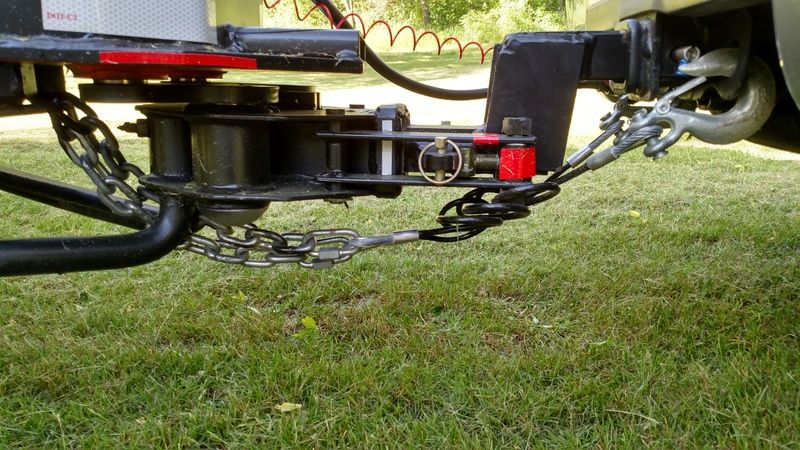As I said in my prior post I'm not going to re-litigate this safety chain/breakaway switch saga, but one of the more interesting that covers some of the more important points is found in the following thread
CLICKYJust a couple of additional thoughts on this if they weren't covered in the above link:
1. There IIRC fed requirements on safety chains and their attachment points with that basically being each safety chain and any attachment points are to have a breaking strength equal to the GVWR of the trailer.
2. Ron estimated I believe that the max tension under full breaking of a TT would be in the order of 50 to 75 percent of the GVWR of the trailer. This is important in that as the tension increases the tension in the chains will tend to "lift" or at least reduce the weight that the tongue would contact the pavement with.
3. Crossing the safety chains especially from a common centered attachment point tends to try and keep the trailer tracking straight behind the TV and not veering off side to side.
4. Crossing the safety chains even if they won't prevent the tongue from contacting the pavement they will provide somewhat of a "SKID surface" so the end of the tongue won't catch on the pavement as easily. A simple experiment for those willing is to take and block your trailer. Then raise the tongue off the TV and pull forward until the chains are stretched out straight and set the parking brake on the TV and then lower the tongue and see what happens since this is as close as you can simulate what IMO should happen during a disconnect where the breakaway switch puts full braking to the TT with the safety chains still attached. For me it is also key to NEVER TOUCH the TV brakes and let the trailer slow both vehicles down during a disconnect scenario.
Obviously one caveat is I haven't included any potential unique things in relation to either the HA or Propride systems, but I would think the basic principles are the same and are the best you can do and what I would recommend to follow.
Larry



